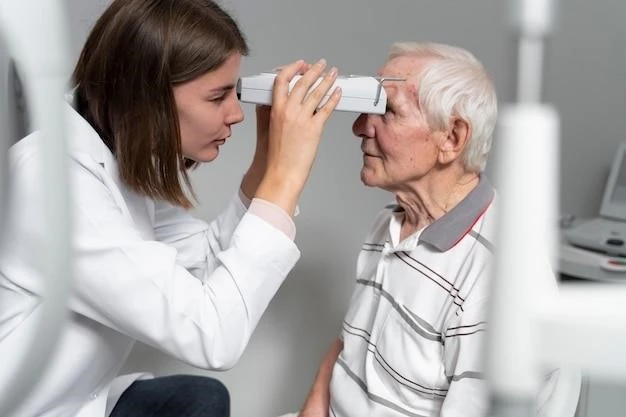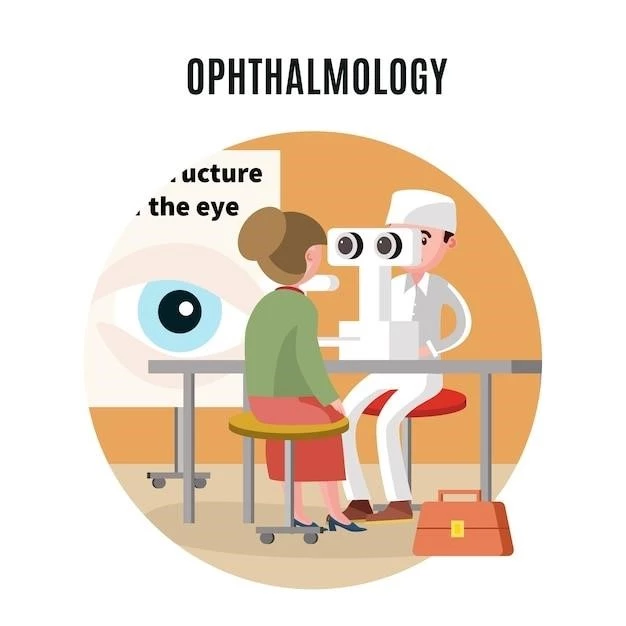Introduction
Progressive supranuclear palsy (PSP) is an uncommon neurological disorder affecting various functions including movement, balance, speech, and vision.
Definition of Supranuclear Ocular Palsy
Supranuclear ocular palsy is typically associated with progressive supranuclear palsy (PSP), a neurological disorder characterized by impairments in eye movements, balance, speech, and cognitive functions. It involves dysfunction at a higher brain level than the cranial nerve nuclei, leading to specific abnormalities in voluntary eye movements and gaze control.
Overview of Progressive Supranuclear Palsy (PSP)
Progressive supranuclear palsy (PSP) is a rare neurological disorder impacting movement, balance, speech, swallowing, vision, and eye movements.
Characteristics of PSP
Progressive supranuclear palsy (PSP) presents with a spectrum of symptoms affecting voluntary movements, gait, balance, speech, swallowing, mood, behavior, and cognition. It is distinct for its impact on eye movements, leading to vertical supranuclear gaze palsy and associated impairments in postural control.
Steele-Richardson-Olszewski Syndrome
Steele-Richardson-Olszewski syndrome, also known as Progressive Supranuclear Palsy (PSP), is characterized by symptoms such as progressive supranuclear ophthalmoplegia, axial rigidity, pseudobulbar palsy, and mild dementia. This syndrome involves degeneration in the brainstem and basal ganglia region, impacting vertical eye movements and postural stability.
Causes and Risk Factors
The causes of supranuclear ocular palsy include tauopathy, age-related factors, and specific genetic predispositions.
Tauopathy in PSP
Progressive supranuclear palsy (PSP) is recognized as a tauopathy, a type of neurodegenerative disorder characterized by abnormal tau protein accumulation in the brain. This accumulation leads to nerve cell dysfunction and eventual cell death, contributing to the clinical manifestations of PSP.
Age of Onset and Prevalence
Progressive supranuclear palsy (PSP) typically manifests in individuals in their sixties or later, with an average onset age in the mid-sixties. The prevalence of PSP is estimated to be less than 5 per 100٫000 individuals. This neurodegenerative disease impacts various aspects of the brain٫ leading to motor impairments٫ changes in cognition٫ and alterations in eye movements.
Symptoms and Clinical Presentation
Characterized by impairments in movement, balance, speech, and cognition, Supranuclear Ocular Palsy involves unique clinical manifestations.
Motor Symptoms
Motor symptoms of Supranuclear Ocular Palsy involve impairments in voluntary movements, gait stability, and muscle rigidity, impacting daily activities and mobility.
Cognitive and Behavioral Changes
In Progressive Supranuclear Palsy (PSP), cognitive decline, abnormal behaviors, and mood changes are commonly observed, impacting daily functioning and quality of life significantly. These alterations often coexist with motor symptoms, complicating the management and care approach for individuals with PSP.

Diagnosis of Supranuclear Ocular Palsy
The diagnosis of Supranuclear Ocular Palsy involves assessing eye movements, cognitive functions, and motor coordination to identify specific neurological abnormalities.
Differential Diagnosis with Parkinson’s Disease
In distinguishing Supranuclear Ocular Palsy from Parkinson’s Disease, clinicians evaluate distinct ocular abnormalities and functional impairments related to eye movements, aiding in accurate diagnostic determination.
Diagnostic Challenges and Tools
Diagnosing Supranuclear Ocular Palsy poses challenges due to overlapping symptoms with other conditions like Parkinson’s disease. Specialized diagnostic tools, including eye movement assessments, cognitive tests, and imaging techniques, are crucial for accurate differential diagnosis and effective treatment planning.
Treatment and Management
Treatment for Progressive Supranuclear Palsy focuses on symptom management including movement disorders, speech, swallowing difficulties, and cognitive impairments. Multidisciplinary care plays a crucial role in improving the quality of life for patients.
Symptomatic Treatment
Managing Progressive Supranuclear Palsy (PSP) focuses on alleviating symptoms like rigidity, balance issues, speech difficulties, and cognitive changes through a combination of medications, therapies, and supportive care.
Multidisciplinary Approach in Patient Care
The comprehensive management of Progressive Supranuclear Palsy entails a multidisciplinary approach involving neurologists, physical therapists, speech therapists, occupational therapists, and support groups. By addressing the diverse needs of patients, this holistic care strategy aims to enhance functionality and quality of life.
Research and Developments
Clinical progress in understanding Progressive Supranuclear Palsy (PSP) includes advancements in remote neurological assessments using wearable sensors and distinguishing PSP from Parkinson’s Disease with specialized tools.
Clinical Trials for Progressive Supranuclear Palsy
Ongoing clinical trials for Progressive Supranuclear Palsy (PSP) aim to advance research on potential interventions and therapies targeting the specific neurological deficits associated with this complex disorder. These trials involve innovative approaches to enhance patient outcomes and potentially slow the progression of the disease.
Emerging Therapies and Interventions
Emerging therapies and interventions for Progressive Supranuclear Palsy (PSP) focus on developing targeted treatments to address specific symptoms and halt disease progression. Novel approaches include tau-lowering therapies, neuroprotective agents, and innovative rehabilitation strategies to enhance patient outcomes and quality of life.
Prognosis and Life Expectancy
Progressive Supranuclear Palsy (PSP) has a challenging prognosis with an average survival rate of 6 to 7 years post-onset, impacting movement, balance, vision, and cognitive functions.
Median Survival Rates in PSP
Progressive Supranuclear Palsy (PSP) presents a challenging prognosis with median survival rates averaging around 6 to 7 years from the onset of symptoms, with varying impacts on motor function, cognition, and overall quality of life.
Impact on Daily Living
The complex nature of Progressive Supranuclear Palsy (PSP) significantly impacts daily activities, including movement, vision, speech, and cognitive functions, posing challenges for individuals in various aspects of their lives.
Challenges Faced by Patients and Caregivers
Patients with Progressive Supranuclear Palsy (PSP) and their caregivers encounter numerous challenges related to managing motor impairments, cognitive changes, mood alterations, and the overall impact on daily activities and quality of life. The progressive nature of the disease presents ongoing challenges that require continuous adaptation and support.
Prevention Strategies
Currently, there are no known prevention strategies specific to Progressive Supranuclear Palsy (PSP); however, certain lifestyle modifications and risk reduction practices may help promote overall brain health and well-being.
Lifestyle Modifications and Risk Reduction
While there are no specific prevention strategies for Progressive Supranuclear Palsy (PSP), adopting a healthy lifestyle with regular exercise, balanced nutrition, cognitive stimulation, and social engagement may help support brain health and potentially reduce the risk of neurodegenerative conditions.

Support Resources
In dealing with the complexities of Progressive Supranuclear Palsy (PSP), patients and caregivers can access a range of support resources, including patient advocacy organizations, online communities, and caregiver support networks dedicated to providing information, guidance, and emotional assistance throughout the PSP journey.
Organizations and Communities for PSP
Various organizations and communities dedicated to Progressive Supranuclear Palsy (PSP) exist to provide valuable support and resources to individuals affected by the condition and their caregivers. These organizations offer educational materials, virtual support groups, awareness campaigns, and avenues for connecting with others facing similar challenges, fostering a sense of community and solidarity in navigating the complexities of PSP.
Global Perspective on Supranuclear Ocular Palsy
Progressive Supranuclear Palsy (PSP) presents a global health challenge due to its impact on movement, cognition, and daily functioning. The condition’s complexities necessitate a comprehensive approach to management and support.
Driven by a commitment to raise awareness and promote advocacy, organizations and communities worldwide actively engage in initiatives to enhance understanding, support affected individuals, advance research, and improve the lives of those impacted by Progressive Supranuclear Palsy (PSP). These efforts play a crucial role in fostering cooperation, knowledge sharing, and empowerment within the PSP community.
Current Challenges in PSP Management
Managing Progressive Supranuclear Palsy (PSP) poses significant challenges due to the complexity of symptoms affecting movement, cognition, vision, and daily functioning. Addressing these multifaceted issues requires a comprehensive and tailored approach to care.
Awareness and Advocacy Efforts
Efforts in raising awareness and advocating for Progressive Supranuclear Palsy (PSP) play a vital role in promoting understanding, supporting affected individuals, advancing research initiatives, and enhancing the overall well-being of those impacted by this complex condition. Through advocacy campaigns, educational outreach programs, and collaborative initiatives, the global community strives to address the challenges associated with PSP and improve the quality of life for patients and their families.
Future Directions in Research
Research on Progressive Supranuclear Palsy (PSP) is evolving towards improved diagnostic tools, advanced treatment options, and a deeper understanding of the disease’s underlying mechanisms to enhance patient care and outcomes.
Innovations in Understanding PSP Pathophysiology
Advancements in understanding the pathophysiology of Progressive Supranuclear Palsy (PSP) are crucial for developing targeted treatments and interventions. Recent research focuses on unraveling the underlying mechanisms of PSP, including tau pathology, oxidative stress pathways, and neuroinflammatory processes, to pave the way for novel therapeutic strategies and improved patient outcomes.
Conclusion
In conclusion, Progressive Supranuclear Palsy (PSP) presents a complex array of symptoms affecting various aspects of daily life. Continued research into the pathophysiology, innovative treatment strategies, and enhanced support systems are crucial in advancing care for individuals with PSP and improving their quality of life.
